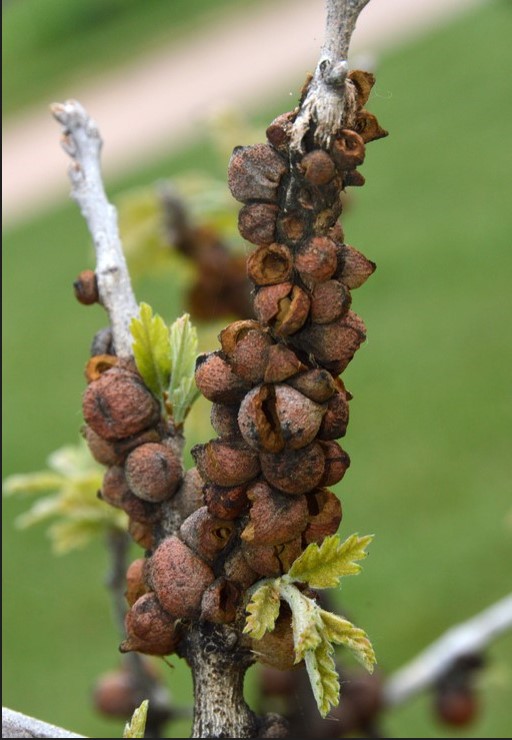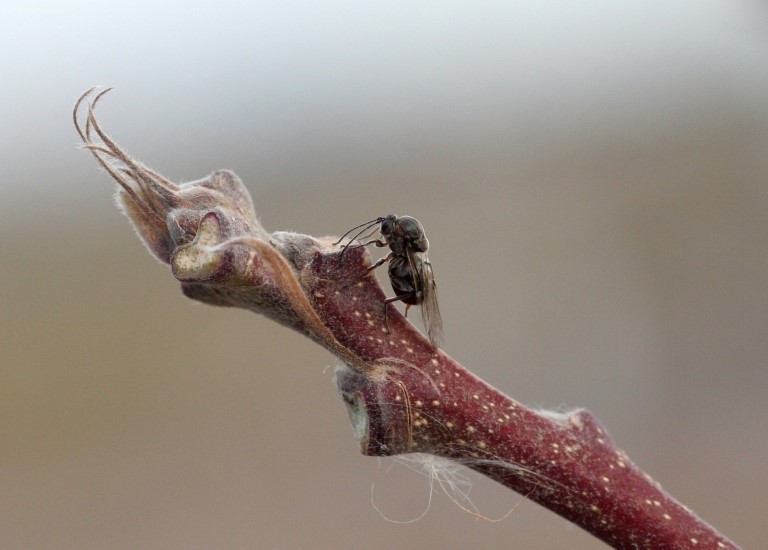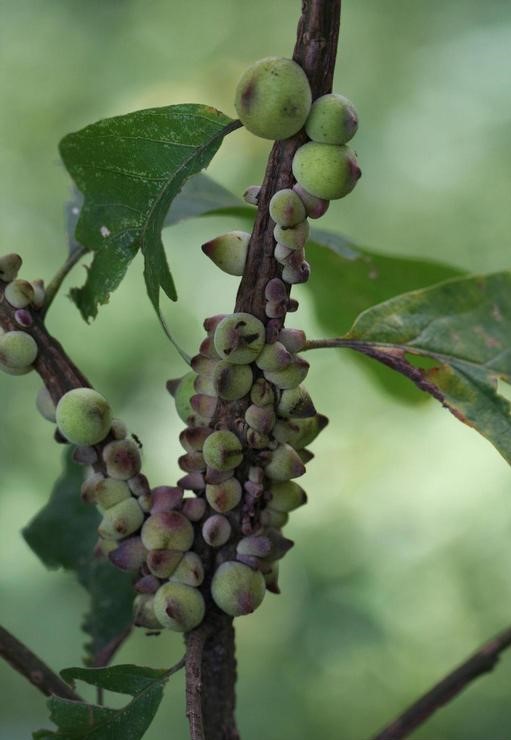Oak Rough Bulletgall Wasp (Disholcaspis quercusmamma)

Fig. 1: Rough bulletgall wasp damage. W. Ciesla, FHMI, bugwood.org
Hosts:
Bur oak, white swamp oak
Damage/Symptoms:
In the summer, dark green swellings will develop on the current season’s twigs, becoming almost knuckle sized by August. The galls become woody on the branches. Branch dieback can occur with heavy infestations, and excessive honeydew is often released from the galls in late summer.
Life Cycle:
Wasps emerge from galls in late fall and lay eggs on the branches. A second generation of females will emerge in the spring and will lay eggs on the emerging buds. The following summer, dark green swellings will start to develop on the current season’s twigs. The galls can cause dieback and significant damage if they become heavy on branches and start to weigh down the tree. Natural enemies, including parasitic wasps, are important for management of the

Fig. 3: Adult wasp. W. Cranshaw, CSU, bugwood.org
pest. These beneficial wasps emerge from the galls in the winter and spring, so, if pruning out the galls, it is important to avoid pruning out any galls during this time. The active ingredient emamectin benzoate has been moderately effective in reducing future galling by the insects; however, the active ingredient is only commercially available, and it must be applied by a certified arborist. The wasps are difficult to control chemically because they are protected within the galls.

Fig. 2: Early-season galls. S. Katovich, bugwood.org
Management
Natural enemies, including parasitic wasps, are important for management of the pest. These beneficial wasps emerge from the galls in the winter and spring, so, if pruning out the galls, it is important to avoid pruning out any galls during this time.The wasps are difficult to control chemically because they are protected within the galls.
Further Information:
To learn more about the topics discussed on this page, contact the Schutter Diagnostic Lab. If you suspect an infestation on your property, contact your local extension agent, the Schutter Diagnostic Lab at Montana State University, or the Montana Department of Agriculture.
This December 2022 fact sheet is also available as a Printable PDF (282KB).
Disclaimer: These recommendations are provided only as a guide. It is always the pesticide applicator’s responsibility, by law, to read and follow all current label directions for the specific pesticide being used. The authors and Montana State University assume no liability resulting from the use of these recommendations. The Montana State University Extension Service is an ADA/EO/AA/Veteran’s Preference Employer and Provider of Educational Outreach.
